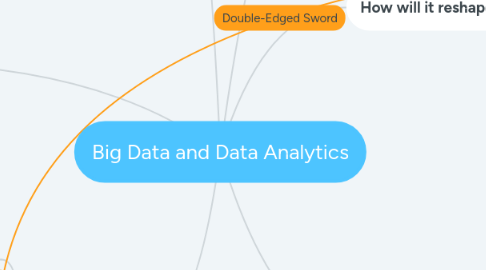
1. Challenges
1.1. Who owns big data?
1.2. educational data science is migrating from the academic lab to commercial sector
1.3. Reliance on externally collected data might be misleading
1.4. Students falling victims to quantification
1.5. Governance issues and the misuse of data
1.5.1. GDPR: European General Data Protection Regulation
2. Educational Data Science
2.1. Animated by a 'sociotechnical imaginary' and considered a 'sociotechnical movement'
2.2. can be understood in terms of its access to an economic capital, cultural capital and social capital
2.3. has a pre-eminent objective of creating a model of the learner
2.4. has an emphasis on the non-cognitive aspects of learning
3. Educational Data Sources
3.1. Learning Management Systems (LMS) & Intelligent Tutoring Systems (ITS)
3.2. Students' interaction with online lessons, eLearning and online forums
3.2.1. MOOCs
3.3. Standardised Global Tests
3.4. Gamification: the friendly source of big data
3.5. Internet of Things (IoT)
3.5.1. Massive amounts of data collected from unlikely resources
3.5.2. It adds another dimention to the implementation of the internet in Education
4. Definitions
4.1. Big data is large volumes of data both structured and unstructured, it is so large that it can only be analysed by computers
4.2. Data analytics is the process of examining data in order to draw conclusions about the information it contains and how it can be used
5. How will it reshape learning?
5.1. Datafying & Digitizing Education
5.1.1. Feedback
5.1.1.1. From small data to big data
5.1.1.2. Adaptive-Learning enabled by Instant feedback with real-time analysis
5.1.1.3. enables designing materials that are fit for purpose, relevant and effective
5.1.2. Individualization
5.1.2.1. tailor education to individual preferences and needs which will increase teaching effectiveness
5.1.2.2. with adaptive-learning software, learning becomes dynamic
5.1.2.3. move from "one size fits all" to "one size fits one"
5.1.3. probabilistic predictions
5.1.3.1. becomes more accurate and detailed leading to more confident decisions
6. Reimagining the Future of Education
6.1. Machine Learning & AI
6.1.1. Big Data has empowered Machine Learning and AI
6.1.2. Chatbots that could pass the 'Turing Test'
6.1.3. Jill Watson: AI teachers versus human teachers
6.1.4. Sofia: a breakthrough
6.2. Imagined Possibilities
6.2.1. AltSchool
6.2.2. Edtech UK
6.2.3. HackingEDU

